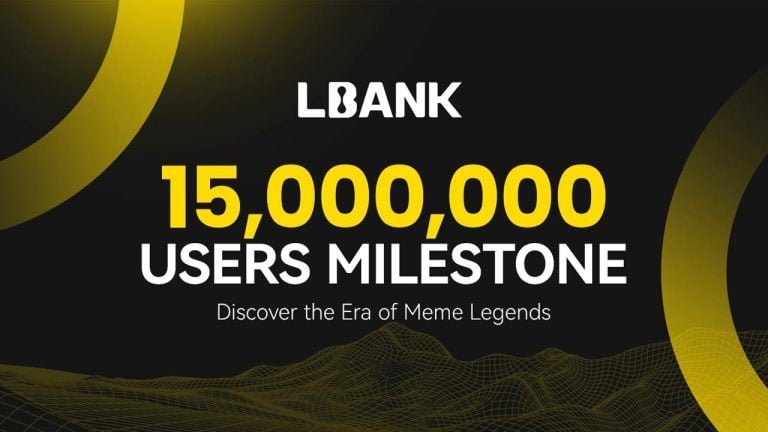If you’re the token “crypto expert” in your family, you’re about to become the centerpiece of the dinner table conversation—whether you like it or not. Here’s how to navigate it without ruining the stuffing or your sanity.
Start With: “Why Now?”Before launching into blockchain fundamentals, ask them what sparked their interest. Is it the recent market movements? FOMO from their friend Steve who suddenly has “passive income”? This not only clarifies their motives but also gives you an opening to manage expectations. As Chris Burniske recently pointed out, “emotions fuel these cycles.” Your cousin Karen doesn’t want Bitcoin; she wants the feeling of being early to something huge. Spoiler alert: she’s not.
The Calm Before the ShillCrypto is notoriously volatile, and the best thing you can do is temper their enthusiasm. Say something like: “Crypto isn’t a get-rich-quick scheme; it’s a frontier technology with high risk and long-term potential. Think of it more like planting a tree than buying a lottery ticket.” This sets the stage for them to approach their shiny new interest with some level of humility. Thanksgiving miracles, right?
Highlight the Basics (Without Sounding Condescending)Here’s your chance to lay down the fundamentals. Stick to key points:
What They’re Buying: “Bitcoin is digital gold. Ethereum is a decentralized computer. Everything else? Research before you touch it.” How They’re Buying: Emphasize security. “Don’t buy anything unless you’re prepared to store it safely. Hardware wallets are a must.” Why They’re Buying: If their only answer is “because prices are going up,” that’s a red flag. Crypto investing should align with a long-term belief in the technology or its potential.Avoid jargon like “smart contracts” or “layer 2 scaling” unless your family is oddly well-versed in tech. Keep it relatable: “Bitcoin is to money what email was to letters.”
Warn About the Risks (Without Being a Buzzkill)Here’s where you channel your inner parental voice:
Volatility: “Crypto can drop 80% in a blink. Can you handle that without panic selling?” Scams: “If someone promises guaranteed returns, run. Crypto has no guarantees except unpredictability.” Taxes: “Every transaction is taxable. Yes, even your $50 of Dogecoin. Welcome to the IRS’s naughty list.”Tie it back to their level of experience. If they’ve never managed their own investments, this is not the space to start throwing their life savings around.
Offer a Beginner’s PathIf they’re still eager (and you haven’t been banned from the dessert table), point them to the simplest entry points:
Suggest starting with a tiny allocation, say 1% of their portfolio. Encourage them to stick to blue-chip assets like Bitcoin or Ethereum, avoiding the siren song of meme coins. Advocate for dollar-cost averaging (DCA): “It’s like setting up a recurring coffee order but with crypto.”Tools like Coinbase, Kraken, or Binance are beginner-friendly, but emphasize the importance of not leaving funds on exchanges. Nothing kills the holiday vibe like explaining the FTX collapse to Grandma.
End With PerspectiveCrypto is much bigger than the latest price spike. It’s about rethinking money, decentralizing power, and enabling global innovation. End the conversation with a note of curiosity rather than conviction:
“If you’re interested, start small, educate yourself, and think long-term. It’s okay to wait and watch, too—crypto isn’t going anywhere.”
This leaves the door open for further discussion while protecting you from becoming the family’s unofficial financial advisor. Remember, the goal isn’t to convert your relatives into Bitcoin maximalists; it’s to help them avoid bad decisions while you all enjoy the pie.
So this Thanksgiving, raise a glass to decentralization and keep the conversation as light as pumpkin chiffon. And if Uncle Bob does decide to “ape in,” make sure he knows: the turkey might not be the only thing getting roasted this year.
If in doubt, here’s some salient advice from Chris Burniske who wrote on X, “Tell your friends and family that bull market started two years ago. So current entry points are not as optimal. From current entry prices, if they 2x, encourage them to take half out at that point, leaving their initial cost allocated (1/2 of 2x = 1x) but securing profit. Then if they hit a 3x from entry prices, take everything out, or get to a realized 2x and hold 1x (cost).
Bear market selling is for the weak or scared, but it’s uniquely hard to sell in a raging bull market. Sometimes people resent you for it if they feel they sold too early, though they’ll thank you later.
They also need to be careful if they take profits out and then chase the market again, reinvesting those profits as they feel FOMO when things keep going up — generally a horrible idea. If the market unexpectedly collapses, they can owe more in taxes on realized gains.
Every sale of a crypto asset is a taxable event, even when going crypto-to-crypto. Once I start taking money out for real, I aim to sit on it for 12–18 months in a traditional finance principal-protected, interest-bearing account. High-yield crypto stablecoin accounts don’t count.
While the ETFs and potential sovereign buying could mean we don’t have as brutal a bear market for BTC in the future, every bull cycle, people come up with reasons for why we’re going stupid high or won’t have a bear. “Supercycle” is always a collective delusion.
I can see reasons for a repeat cycle (Q4 2025 top) as well as reasons for an extended cycle breaking away from the 4-year pattern. Even though we may consolidate after the US inauguration, I don’t buy this chatter about a shortened cycle. That’s bear market PTSD talking.
That said, anything that goes 100x quickly is prone to at least an 80–90% crash at some point, structurally — too many people sitting on profit.
If SOL goes from $8 to $800 this cycle, it could then bottom in the future (like 2027) at $80–160. So if they buy and strictly hold at $240, they’ll have lost money by the next bear. It’s hard for people to realize that from the mania of the bull.
No one is getting rich or crazy multiples from these prices (SOL is already up >30x from the lows), but people will see others making good money, so it’s hard to resist. If you tell them not to buy and instead wait for an eventual crash, they’ll think prices won’t go lower.
Many inexperienced investors think more in dollars than in multiples or percentages. For example, if you say SOL could go to $1,000, they’ll think, “Wow! That’s $760 more per SOL!” But the move from $8 to $240 “only” gave them a 30x.”
Stay safe out there, and happy hodling.















